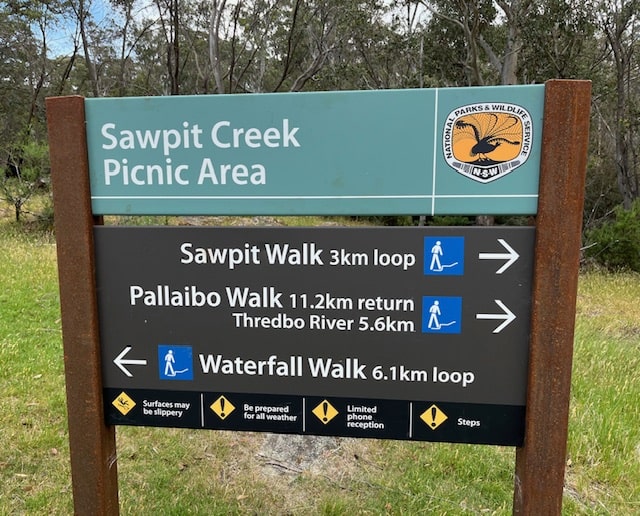
Day two of our Kossie week saw us complete two separate hikes. The first was a one-way hike from the Sawpit Creek Picnic area to the Jindabyne River Picnic area, also called the Pallaibo Walk.
The Sawpit Creek Hike
- When: 17 December 2024
- Where: Kosciusko National Park
- Weather: Overcast summer’s day with rain forecast with a low of 59.4F (13C) and a high of 84.2F (29C). The humidity was high, and without the alpine wind, it felt hotter than the previous day.
- Departure: From Sawpit Creek picnic area
- Length: 7.5 miles, 5.47 km
- Elevation gain: 187 ft, 57 m
- Duration: 1 hour 34 minutes moving time
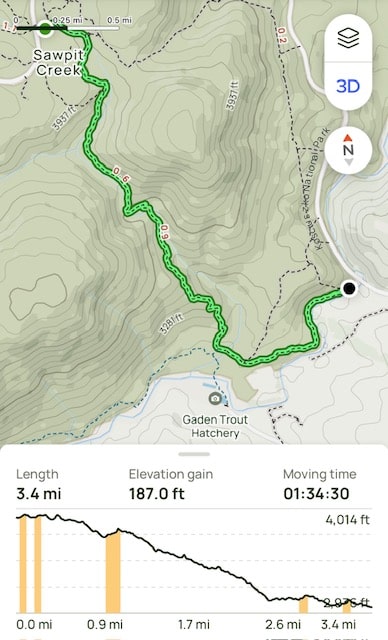
The Start
This undulating track meandered through a woodland rich with diverse eucalypt species—candlebark, bark sallee, white sallee, manna gum, mountain gum, and woolly tea-trees. The trail gave the illusion of a steady descent, with its dips and rises blending seamlessly into the landscape.
Unlike our the previous day’s hike to Mount Stilwell, where the silence was striking, this trail was alive with the buzz of cicadas. It raised an intriguing question: Do cicadas prefer the lower altitudes or specific tree species? Something for me to research later.
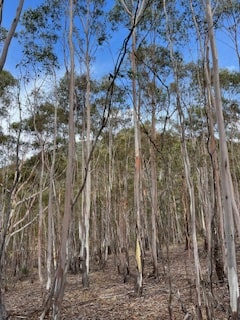
Wildlife Sightings Along the Route
Wallabies made brief, elusive appearances, bouncing through the woodlands, their movements barely more than a blur. The warm, still day brought out the March flies in force, and despite wearing long sleeves, I wasn’t spared their bites.
As we neared the Jindabyne River, the woodland gave way to an open grassed plain. Kangaroos, startled by our presence, bounded away gracefully as we approached. The short 90-minute hike ended at a peaceful spot by the river, where we paused for morning tea amidst the tranquil sounds of flowing water.
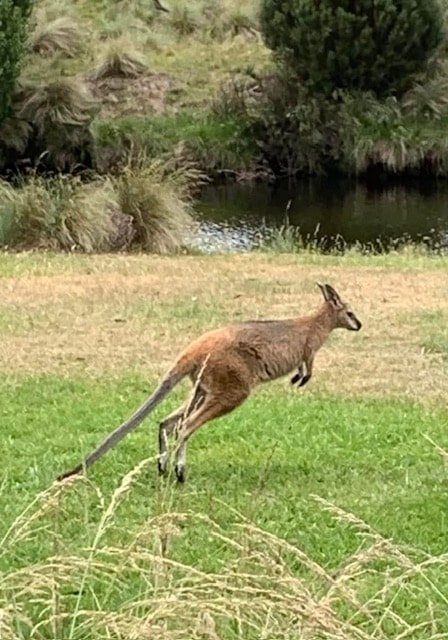
The Second Walk – Sawpit Creek Circuit
- When: 17 December 2024
- Where: Kosciusko National Park
- Weather: Overcast summer’s day with rain forecast with a low of 59.4F (13C) and a high of 84.2F (29C). The humidity was high, and without the alpine wind, it felt hotter than the previous day.
- Departure: From Sawpit Creek picnic area
- Length: 3.8 miles, 6.11 km
- Elevation gain: 636.5 ft, 194 m
- Duration: 1 hour 53 minutes moving time
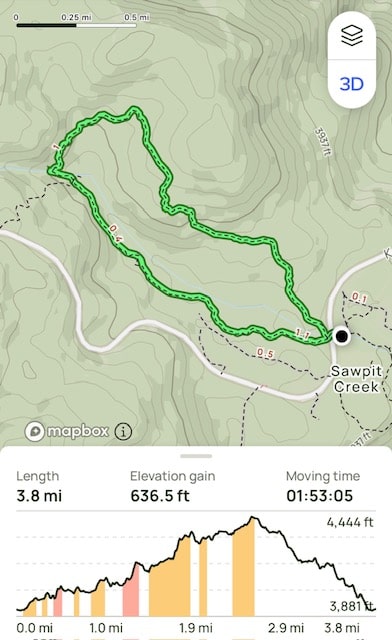
With the help of an earlier car shuffle, we had a ride waiting to take us to the start of our second hike: the Waterfall Trail, beginning and finishing at Sawpit Creek picnic area.
Lunch at the Sawpit Creek Waterfall
The well-marked trail wound its way uphill through a towering eucalypt forest, providing ample shade as we ascended. Eventually, we arrived at a picturesque, stepped waterfall, where we perched on the rocky edge to enjoy lunch. The water cascaded past our feet, a soothing backdrop to the peaceful moment.
An Unexpected Surprise
Post-lunch, the climb continued until we reached the highest point of the trail. The descent brought an unexpected delight—giant granite boulders strewn across the landscape like ancient sentinels. These smooth, weathered boulders are a testament to the geological history of the Australian continent, formed hundreds of millions of years ago.
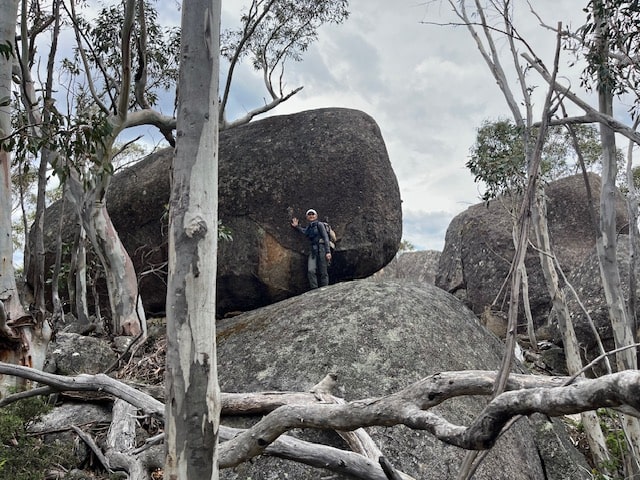
The Story of the Granite Boulders
The granite boulders we encountered are a product of immense geological processes dating back to the Paleozoic era, around 400-500 million years ago. During this time, magma from deep within the Earth’s crust slowly cooled and solidified beneath the surface, forming large granite masses. Over millions of years, tectonic forces uplifted the land, exposing the granite to the surface.
Erosion played a key role in shaping these boulders. Wind, water, and temperature fluctuations caused the granite to break down into rounded, smooth shapes through a process called spheroidal weathering. These boulders now serve as striking reminders of the ancient origins of Australia’s landscape and the powerful natural forces that shaped it.
My Final Thoughts
Though easier than our high-country hike the day before, these two trails offered a wonderful contrast. The diversity of flora and fauna was striking, from the woodland’s vibrant cicadas and elusive wallabies to the open plain, home to kangaroos. The peaceful waterfall and ancient granite boulders provided moments of quiet reflection and awe, reminding us of the remarkable history and beauty of Kosciuszko National Park. The only negative, the annoying March flies.
Each step felt like a celebration of this unique corner of the Australian landscape—a place I’m always eager to explore again.
If you have any comments or questions, you can leave them here.
